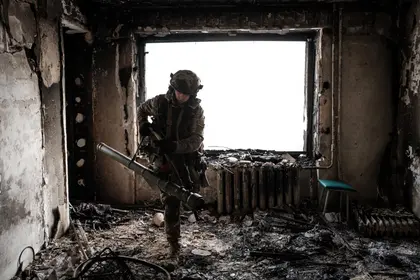An ambulance screams toward a triage hub for wounded Ukrainian soldiers outside Bakhmut, the stage for the longest battle of Russia's invasion, where there is no end in sight to a brutal stalemate.
Men with limbs lost to mines and artillery wounds are pulled from battlefields carved with trenches and scarred by shells in a fight drawing comparisons to infamous battles of World War I.
JOIN US ON TELEGRAM
Follow our coverage of the war on the @Kyivpost_official.
"It's like Verdun out there," said Ivan, an ambulance driver waiting on a roadside outside the battered industrial city in the eastern Donetsk region.
Like the 1916 fight on the western front in France, the battle for Bakhmut, now in its seventh month, has been long, bloody and futile.
Victory over the city, pounded to ruin, would be merely symbolic as the anniversary of the invasion looms on Feb. 24.
Yet even as the dead and wounded are rushed out or abandoned on the battlefield, both sides are digging in and flinging more troops at Bakhmut to break the deadlock.
Moscow has ramped up efforts to score its first significant victory after months of setbacks, while Kyiv is determined to hold its ground.
- 'A lot of symbolism' -
"It's a classic World War I problem," said Mark Cancian, a senior security program adviser at the Center for Strategic and International Studies.
When Moscow's first attempt to encircle Ukrainian forces failed, Russia "kept attacking", he said.
And even if they do succeed, he added, "it will mean nothing operationally and strategically".
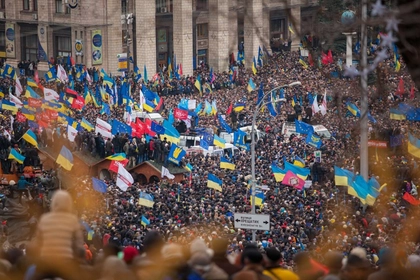
Tsikhanouskaya Honors Ukraine’s Day of Dignity and Freedom
"It has a lot of symbolism, so if they captured Bakhmut, they'd make it sound like it was important, but it wouldn't be."
But, he conceded, Ukraine's options are limited.
"If that's where the Russians are attacking, the Ukrainians don't have a choice but to defend."
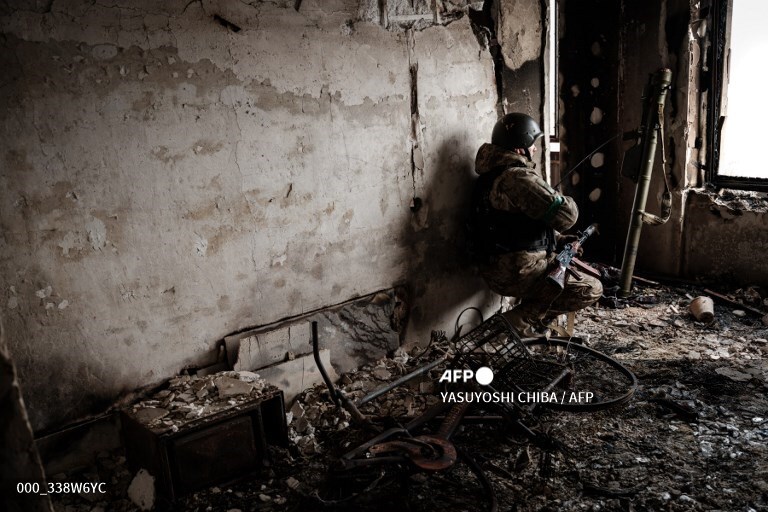 A Ukrainian serviceman of the State Border Guard Service works in a position in Bakhmut on Feb. 9, 2023, amid the Russian invasion of Ukraine.YASUYOSHI CHIBA / AFP
A Ukrainian serviceman of the State Border Guard Service works in a position in Bakhmut on Feb. 9, 2023, amid the Russian invasion of Ukraine.YASUYOSHI CHIBA / AFP
British intelligence has estimated Russia's progress to be halting, but that hasn't eased pressure on Ukrainian President Volodymyr Zelensky, who has called for more weapons from Western partners.
"If weapon (deliveries) are accelerated -- namely long-range weapons -- we will not only not withdraw from Bakhmut, we will begin to de-occupy Donbas," he told senior EU leaders in Kyiv earlier this month, referring to the wider region, including Donetsk.
"We will fight as long as we can" for Bakhmut, he said.
But to keep Russia at bay, Ukraine's forces also need more standard artillery and ammunition, said Oleksandr Kovalenko, a Ukrainian military analyst.
"If this does not happen, then we will have serious problems in Bakhmut," he told AFP.
- Russia's 'advantage' -
The lack of firepower on the front is keenly felt.
"The enemy has a huge advantage in artillery," Yuriy Kryzhberskyi, a 37-year-old Ukrainian officer, told AFP near the front in late January.
"You can sit in a basement in the village of Vasyukivka (north of Bakhmut) for half an hour and hear 40 incoming shells."
Russia's strength in numbers is also daunting, said a sergeant near Soledar with the call sign "Alkor".
"We shoot, and shoot and shoot, but after five minutes, the next 20 people are coming towards us," he said.
Moscow and the notorious Wagner mercenary group have been accused of using ill-prepared and poorly equipped recruits as "cannon fodder" -- a claim Russian military analyst Alexander Khramtchikhine dismissed as "Western propaganda".
Ukraine's ranks have also faced losses.
Major Volodymyr Leonov of Ukraine's Territorial Defense Forces said in three days in January he had dozens wounded.
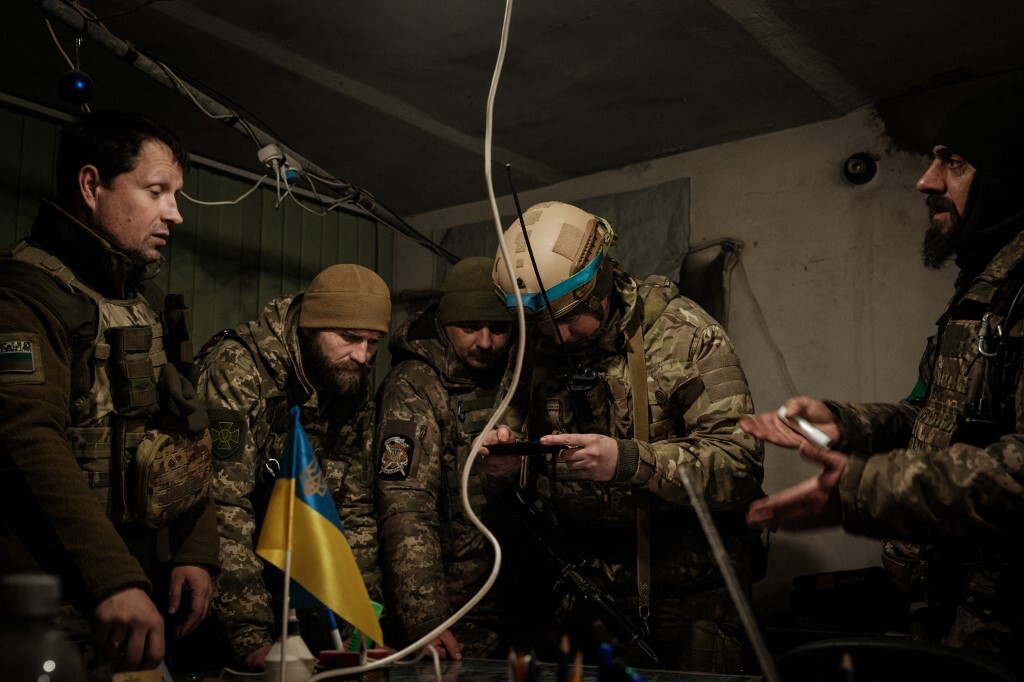 Ukrainian servicemen of the State Border Guard Service work in the operations room in Bakhmut on Feb. 9, 2023, amid the Russian invasion of Ukraine.
Ukrainian servicemen of the State Border Guard Service work in the operations room in Bakhmut on Feb. 9, 2023, amid the Russian invasion of Ukraine.
YASUYOSHI CHIBA / AFP
The bodies of five of his fighters could not be retrieved from the battlefield.
"Our people are motivated. Everyone came to fight," he said.
But, he added, "when there is no fire support and when there are no armored vehicles, we are simply shot, like in a shooting range."
Neither Ukraine nor Moscow has given death tolls.
- 'Forbidden to retreat' -
But both sides have described the battle for Bakhmut as the bloodiest of the war.
Near the front, north of Bakhmut -- among broken trees and strewn grenades -- a dozen bodies of alleged Wagner fighters lay abandoned on the frosted ground, AFP saw in late January.
"Apparently, they were forbidden to retreat," Ukrainian serviceman Vladislav said, as heavy shelling pounded nearby.
"They didn't even take their wounded. And they died there eventually in the field."
Wagner boss and ally of Russian President Vladimir Putin, Yevgeny Prigozhin, has described "fierce" fighting unfolding on "every street, every house, every stairwell".
And evidence of the fighting is everywhere, from burning buildings to shell fragments and blood-soaked snow littered with medical equipment.
A city once known for sparkling wine and salt mines, and home to 70,000 people, half of the buildings in Bakhmut are damaged or destroyed, according to officials.
- 'Living in a basement' -
Rows of Soviet-era housing blocks are charred and battered, their windows exploded out across the streets.
The bridge spanning the city's river has been reduced to a jumble of boards, tyres and pallets.
Natalia Shevchenko, who makes the crossing daily for clean water -- the city having lost all supply, along with gas, electricity and phone signal -- is used to the whistle of falling shells.
"I am living in the basement right now. When I get out, I am like a mole -- my eyes have to get used to the light."
She is one of some 6,500 people holding out in Bakhmut, even as life is squeezed from the city.
More civilians have left since fighting intensified in January, said Tetyana Scherbak, a volunteer at a humanitarian hub.
Some wait overnight at the hub for evacuation, huddled next to stoves with salvaged belongings.
Others are retrieved from their homes by people who brave shelling to reach them -- sometimes getting caught in the line of fire.
"It's all about luck there," said 24-year-old Ukrainian volunteer Mykola, at the memorial in Kyiv for one of two British volunteers killed in the town of Soledar in January.
In early February, another humanitarian, American Pete Reed, died in Bakhmut.
- 'History repeats itself' -
Nataliia Yevtushenko, 38, has tried to leave Bakhmut twice.
The first time her 16-year-old son was killed with 60 others when nearby Kramatorsk's train station was struck by a Russian missile, and she returned home.
During a second attempt she was involved in a road accident.
"That's enough trying," she said.
She now volunteers at one of the humanitarian hubs keeping people fed and warm as winter worsens their misery.
The troops in the trenches have no such shelter.
They bear the bitter cold clutching volunteer-made candles in the snow and mud, peering out across no man's land, sometimes barely sleeping for days.
Ukrainian forces are preparing for another onslaught in the hills beyond Bakhmut, digging into the cold earth to cut fresh trenches.
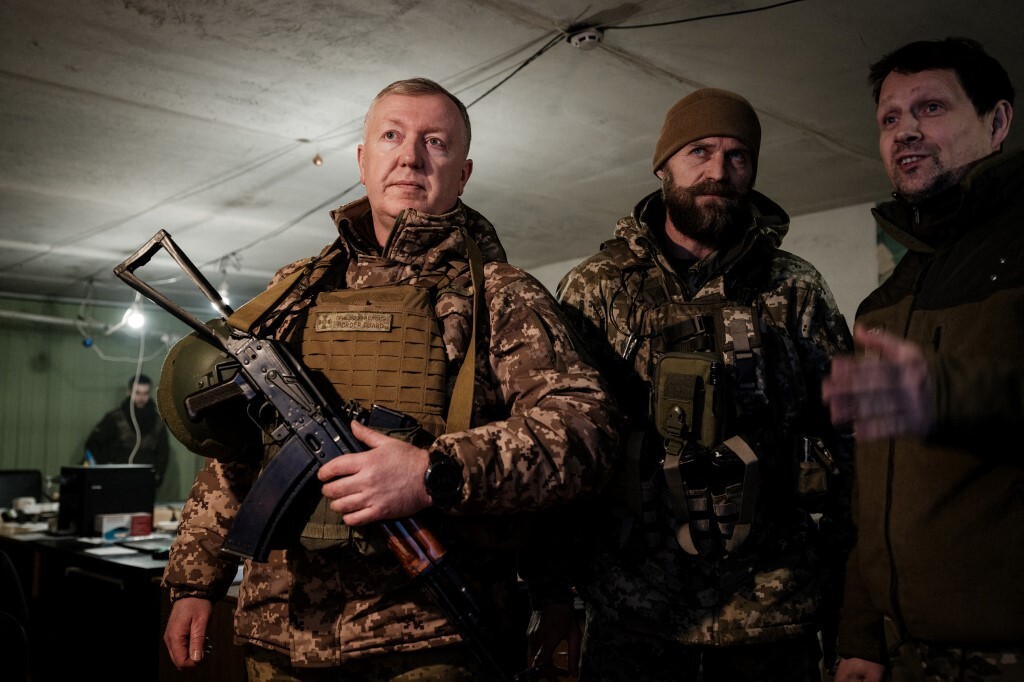 Former Ukrainian governor of Chernivtsi Oblast Serhiy Osachuk (L), 50, now Lieutenant Colonel of the State Border Guard Service, works at Ukraine's operations room in Bakhmut on February 9, 2023, amid the Russian invasion of Ukraine.YASUYOSHI CHIBA / AFP
Former Ukrainian governor of Chernivtsi Oblast Serhiy Osachuk (L), 50, now Lieutenant Colonel of the State Border Guard Service, works at Ukraine's operations room in Bakhmut on February 9, 2023, amid the Russian invasion of Ukraine.YASUYOSHI CHIBA / AFP
In nearby Sloviansk, under a grey January sky, 28-year-old Azov battalion member Oleksandr Korovniy, who was killed in Bakhmut, is laid to rest in the frozen ground.
His friend Oleksiy Storozh gestured to a World War II memorial near where he had just buried his fellow soldier.
"History repeats itself," he said. "What is it all for?"
You can also highlight the text and press Ctrl + Enter


